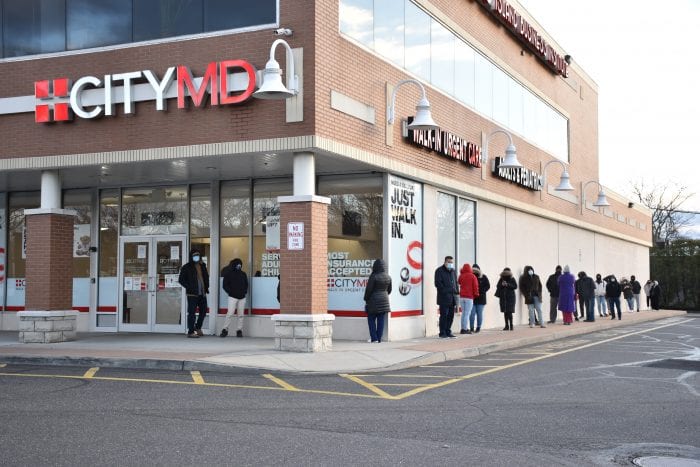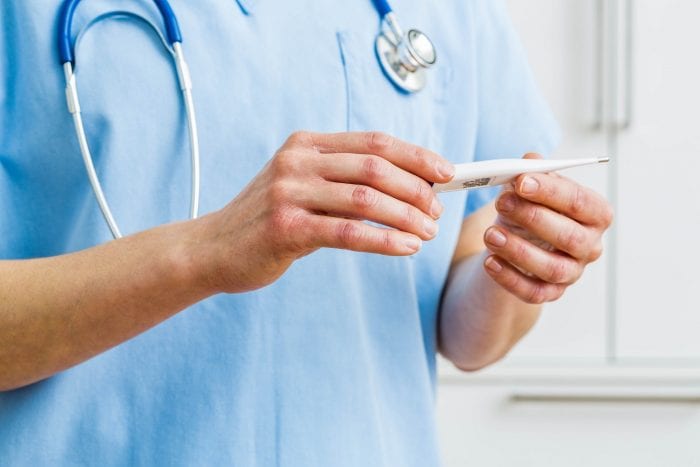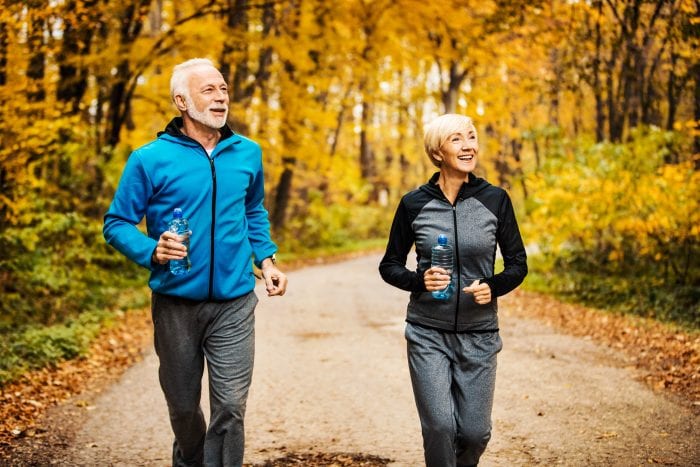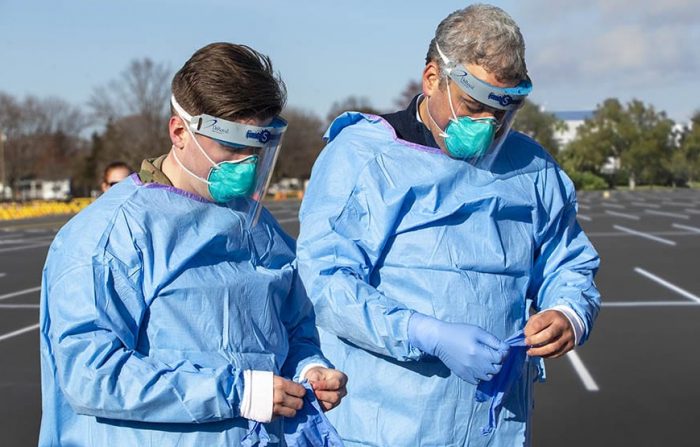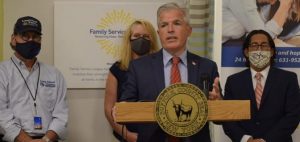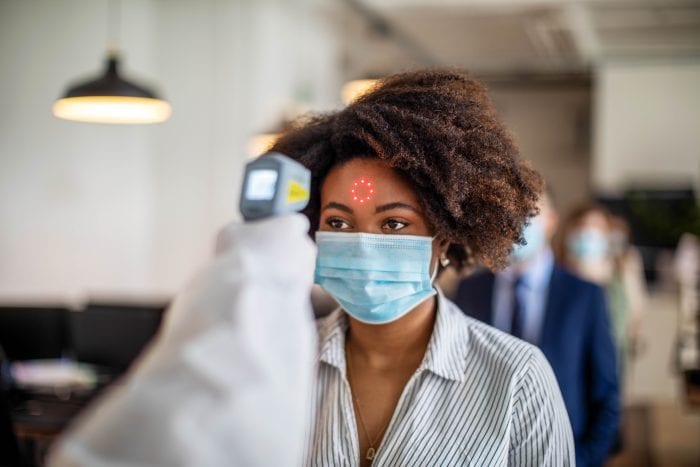Over the last few weeks, a popular conversation among residents is the length of the lines outside CityMD Urgent Care walk-in clinics.
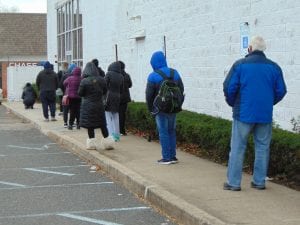
With many seeking COVID-19 tests to spend time with family members over the holidays, for upcoming surgeries or to meet college testing requirements, residents over the last few weeks have seen nearly two dozen or more people standing outside of the urgent care offices, in most cases, socially distanced and wearing masks. Several have commented that they have visited CityMD and have waited for hours in line where patients who are not being tested for COVID, but for other illnesses are also waiting. The urgent care doesn’t bifurcate the line into COVID-related and non-COVID concerns.
One Smithtown woman, who asked not to be named for privacy reasons, said her husband went to one urgent care location for stitches when his hand was bleeding, and he didn’t want to go to a hospital emergency room, not wishing to take away precious time from health care personnel. Once he found out he would have to wait three hours at the urgent care, he wound up going to St. Catherine of Siena Medical Center.
On Sunday, Nesconset resident Mary Jo Orr said she waited in line with her daughter who needed a rapid test because she was starting in a new school. She noticed the line wasn’t that long when they got there at a little before 11 a.m.
“Apparently, early in the morning one of the workers decided to make a list of the first 100 people,” she said. “They were all given a number and were told to wait in their cars and they would be texted when it was their turn.”
However, management squashed the idea and others who didn’t make the list had to stand outside in line.
“We were there for 3 1/2 hours,” Orr said.
She added that she was prepared to wait, even though she wished the visit went quicker. To deal with the cold weather, she and her daughter took turns waiting in their car.
A spokesperson for CityMD said the locations are all walk-ins and do not take appointments, but the company’s goal is to treat as many people as possible. The urgent care centers offer three forms of COVID-19 testing: the rapid test; polymerase chain reaction, most commonly known as PCR test and needs to be sent to a laboratory; and serum antibody IgG blood test.
“Demand for COVID-related visits, including testing, remains consistently high,” the spokesperson said. “This is creating long lines at almost all our 130-plus walk-in CityMD Urgent Care centers, so we ask patients to please plan accordingly.”
Many have asked why CityMD doesn’t split the line into two or allow patients to wait in cars until they are called into the building.
“Wherever possible, our team members walk the lines and triage patients who need to be seen urgently,” the CityMD spokesperson said. “But, there are potential HIPAA issues with asking patients in line to disclose their condition in front of others.”
She added that CityMD is “piloting a queue system with hopes of a broad rollout.”
“Our goal is to see as many patients as we can in the safest way possible — whether it is for typical urgent care needs or for medical evaluation and a COVID-19 test.”
Many community members have said they have gone to Northwell Health-GoHealth Urgent Care centers instead. The locations require an appointment for COVID-testing. Northwell offers both COVID-19 testing and antibody testing.
Dr. Betsy Koickel, associate medical director of Northwell Health-GoHealth Urgent Care, said the appointments for COVID-related visits were necessary so the staff could better prepare for such visits.
“While we always welcome walk-ins for illness and injury care, we require a spot to be saved for COVID-19 testing in our centers so that we can safely prepare for each patient’s visit,” she said. “During the surge in the need for testing, our teams are working diligently to see all ill and injured patients while also increasing availability for COVID testing.”
The doctor said some walk-in patients may have to wait during peak times as staff members are safely preparing rooms. Even though there are no significant lines outside, patients are asked to wear masks while socially distancing or wait in their cars.
Others in the community have also recommended CVS Pharmacy locations and Stony Brook University Hospital’s testing. Both require an appointment and require the patient to fill out an assessment.

